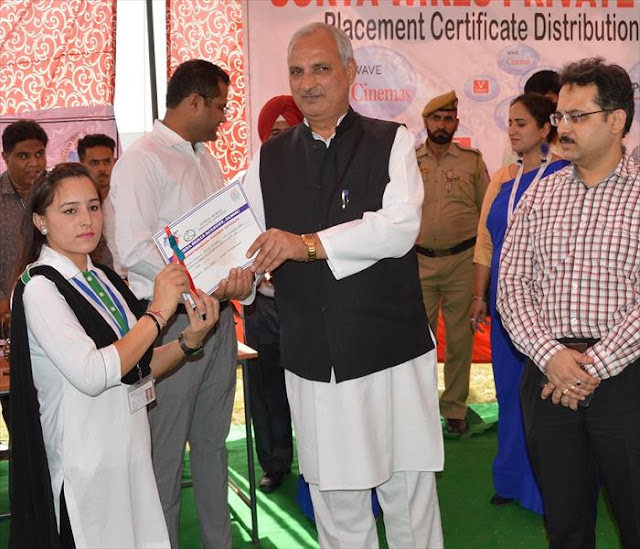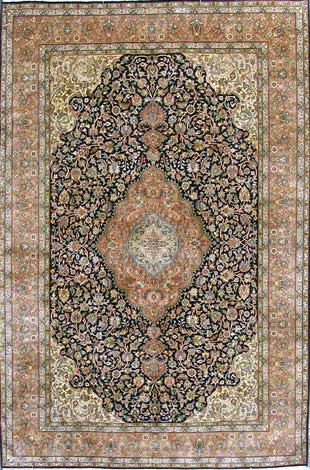Mon, May 21, 2018 at 5:21 PM
‘Giving’ initiative to commemorate Ramzan
Srinagar: 21 May 2018: (Megha Chawla//Jammu and Kashmir Screen)::
IN ITS SIXTH CONSECUTIVE YEAR, VODAFONE’S NOBLE ‘RAMZAN’ INITIATIVE TO CONTINUE EMPOWERING UNDERPRIVILEGED CHILDREN IN KASHMIR THROUGH EDUCATION
- Vodafone has donated INR 30.5 lakh in the last 5 years as a part of this year-on-year ‘giving’ initiative to commemorate Ramzan
- Under this initiative, Vodafone has partnered with Sakhawat Centre, run by Iqbal Memorial Trust, Srinagar, for sixth year running to facilitate the education of underprivileged children
Reaffirming its commitment towards the society in which it operates, Vodafone India, for a sixth year running, will celebrate the holy month of ‘Ramzan’ through its noble ‘Giving’ initiative for underprivileged children in Kashmir. The initiative aims to raise money which will be used to support the noble cause of education of these children.
Vodafone India’s ‘Giving’ gesture on ‘Ramzan’ embraces the true spirit of Ramdaan, the spirit of giving, as this thoughtful initiative by one of India’s leading telecommunications service providers gives the unmatched power of education to the underprivileged children and empowers them to grow and chase their dreams. In the last five years, Vodafone has donated INR 30.5 lakh as a part of this year-on-year ‘giving’ initiative to commemorate Ramzan.
Starting from May 17, 2018, Vodafone will donate 1 paisa for every outgoing call or recharge and Rs. 5 for every new activation in Kashmir Province during the entire month of Ramzan towards the education of underprivileged children. Vodafone will donate the funds raised by this initiative to Sakhawat Centre run by Iqbal Memorial Trust, an NGO in Srinagar, who will use it for the education of underprivileged children in Kashmir Province.
Extending Ramzan greetings to the residents of Jammu and Kashmir (J&K), Arvind Nevatia, Business Head, Punjab, HP and J&K, Vodafone India said, “At Vodafone India, we strive hard to be a meaningful member of the society we operate in by contributing to its development and betterment in all possible ways. Across tiers we run different initiatives which are aimed at promoting greater good, be it helping the poor, protecting the environment or supporting women empowerment. It gives us immense joy and satisfaction that we are honouring the giving spirit of Ramzan in the best possible manner by donating towards education of underprivileged children in Kashmir. Education is the best gift which we can give to our children to empower them to grow in the right direction.”
This is the sixth consecutive year of Vodafone’s tie-up with the Sakhawat Centre for this noble cause. In the last five years of this association, Vodafone has donated INR 30.5 lakhs for this cause. “Five years ago, Vodafone and Sakhawat Centre joined hands for this noble cause and we are proud to continue this association for the sixth year as we find in them the same zeal as Vodafone to make education available and accessible to children in need. Also, like the previous five years, Vodafone will enable its customers in Kashmir to contribute to this larger social cause without putting a burden on their pockets,” added Mr Nevatia.
This ‘Giving’ gesture on ‘Ramzan’ is part of Vodafone’s “Gift-a-Smile” programme that involves various such projects throughout the year. While some of these initiatives are intended to gift smiles and happiness to those in need, others seek to bring cheers to the valued customers of Vodafone. Under the “Gift-a-Smile” programme, Vodafone had donated laptops to the Sakhawat Centre in Srinagar earlier to facilitate computer literacy among underprivileged children.
Vodafone has arranged for a short code 51786 for the initiative. Vodafone customers can now call on 51786 to get detailed information about the initiative.
About Vodafone India:
Vodafone India is a 100% fully owned subsidiary of the Vodafone Group Plc. with operations across the country serving 223 million customers (over 120 million in rural areas). Commencing operations in 2007, Vodafone is today India’s largest foreign direct investor, with a robust, award winning business and committed for the long term. Vodafone Business Services serves the needs of enterprises and government by providing total telecommunications (Voice and Data) solutions across mobility and wireline platforms. Our mobile wallet, M-Pesa is a unique and innovative money transfer service from Vodafone that fosters financial inclusion.
Committed to optimizing the near ubiquitous reach of mobile telephony to address national developmental priorities, the Vodafone Foundation partners is actively engaged in community development initiatives especially in the domains of m-Women, m-Agriculture, m-Education and Disaster Relief. Building on its global experience and expertise, an outreach across India and offering a comprehensive portfolio of technologies- 2G, 3G & 4G, Vodafone is uniquely positioned to actualize the vision of Digital India.








